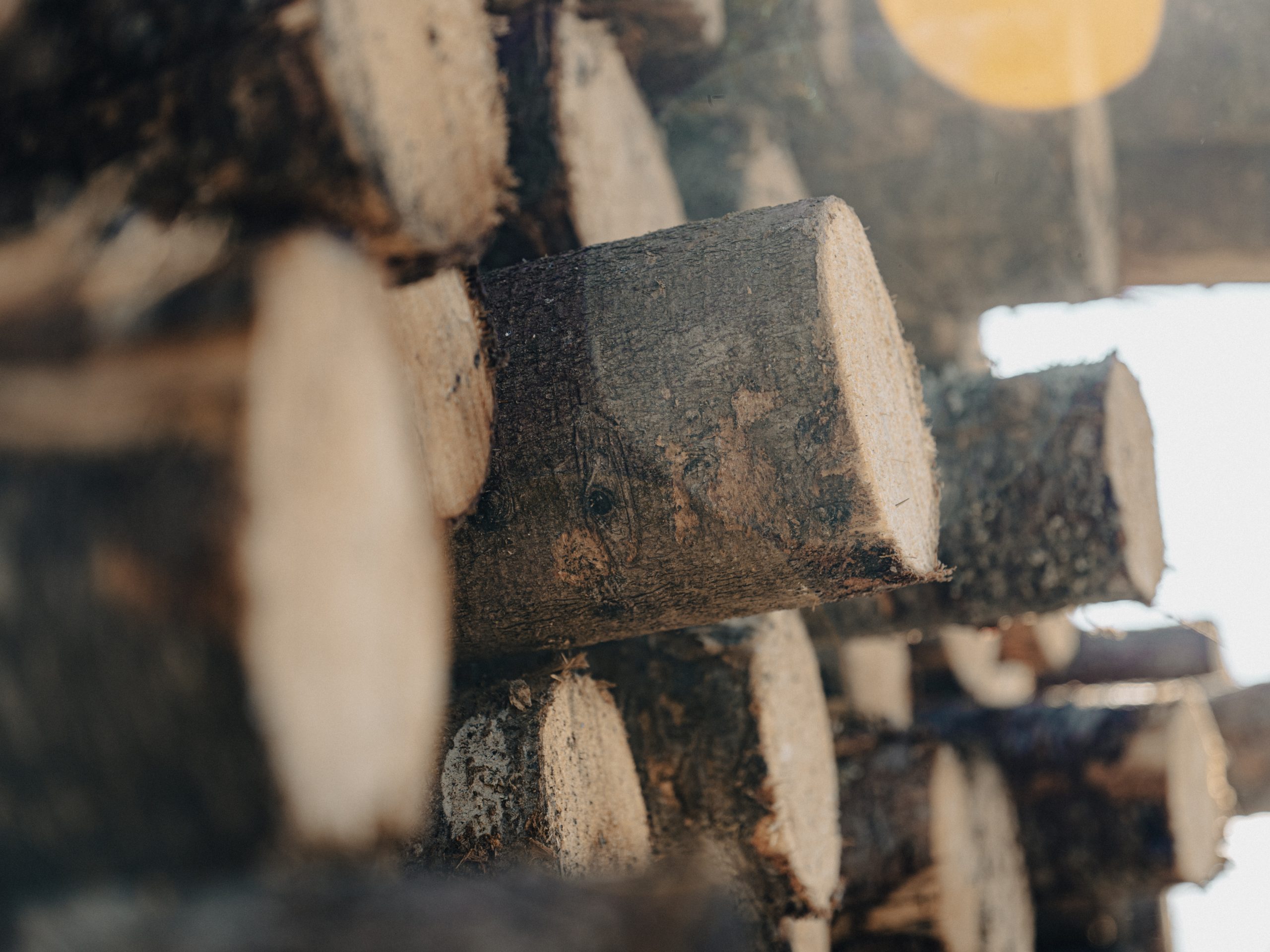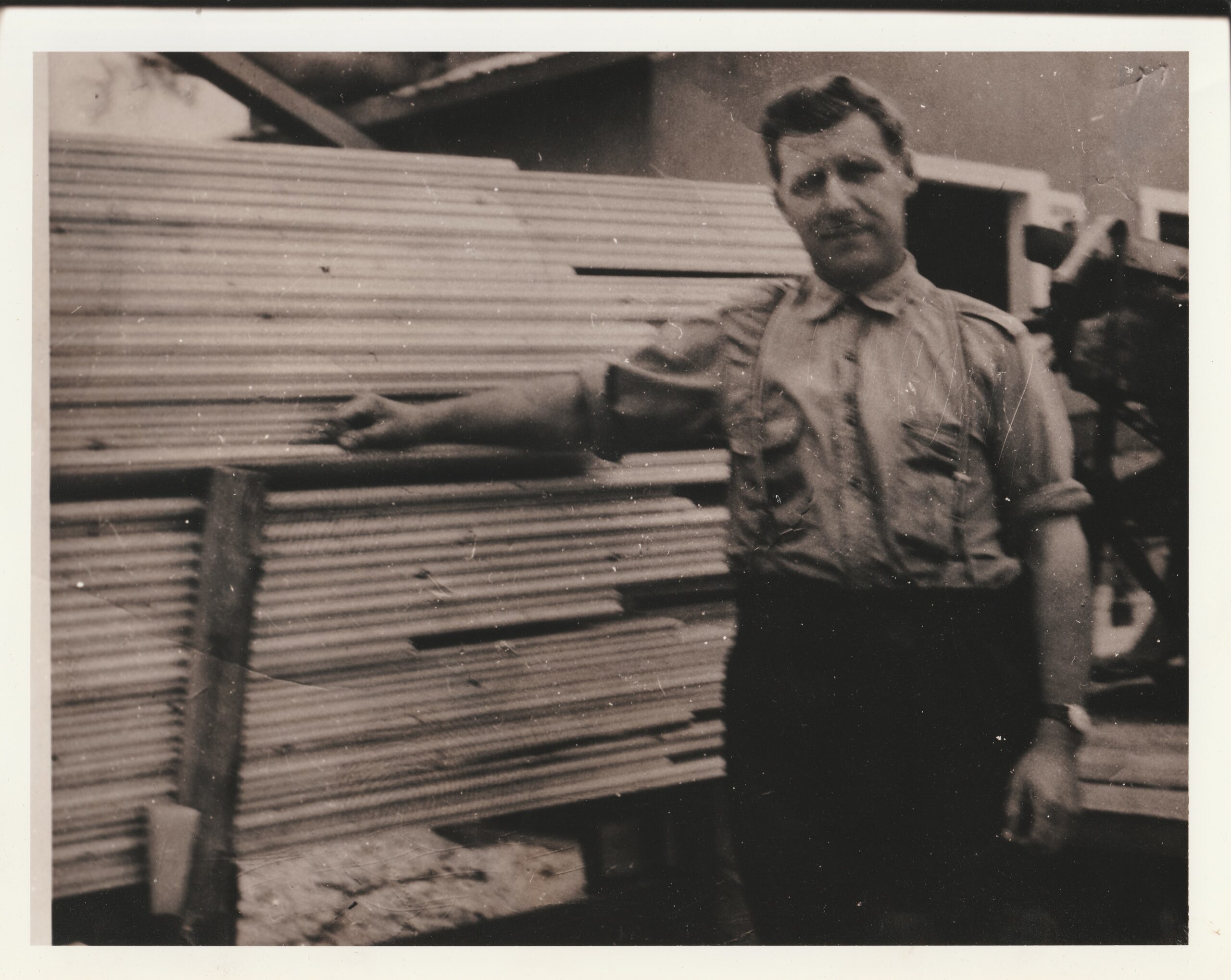Process
Learn about the wood transformation process.
At Fontaine we are dedicated to keeping pace with the latest trends and technologies. Our focus is on maximizing employee safety and engagment, process efficiency and performance. This is why we continually invest in our people, our equipment and our installations.
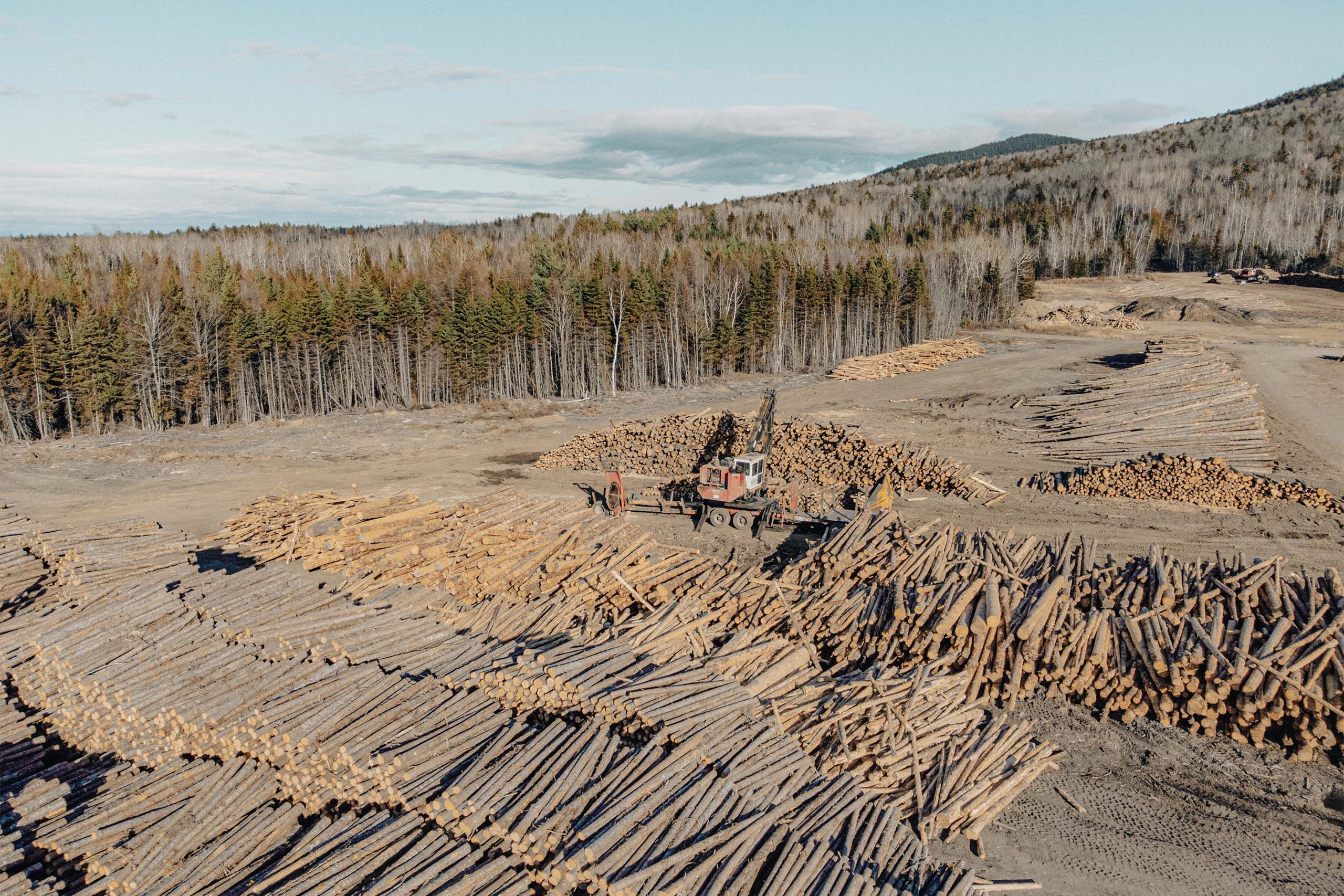
Log procurement and handling
Log supply is a crucial step in the sawmilling process. Regardless of the season and market conditions, we must make sure that we have enough logs for continuous production.
Purchased logs are separated by species and stored in our log yard before being processed.
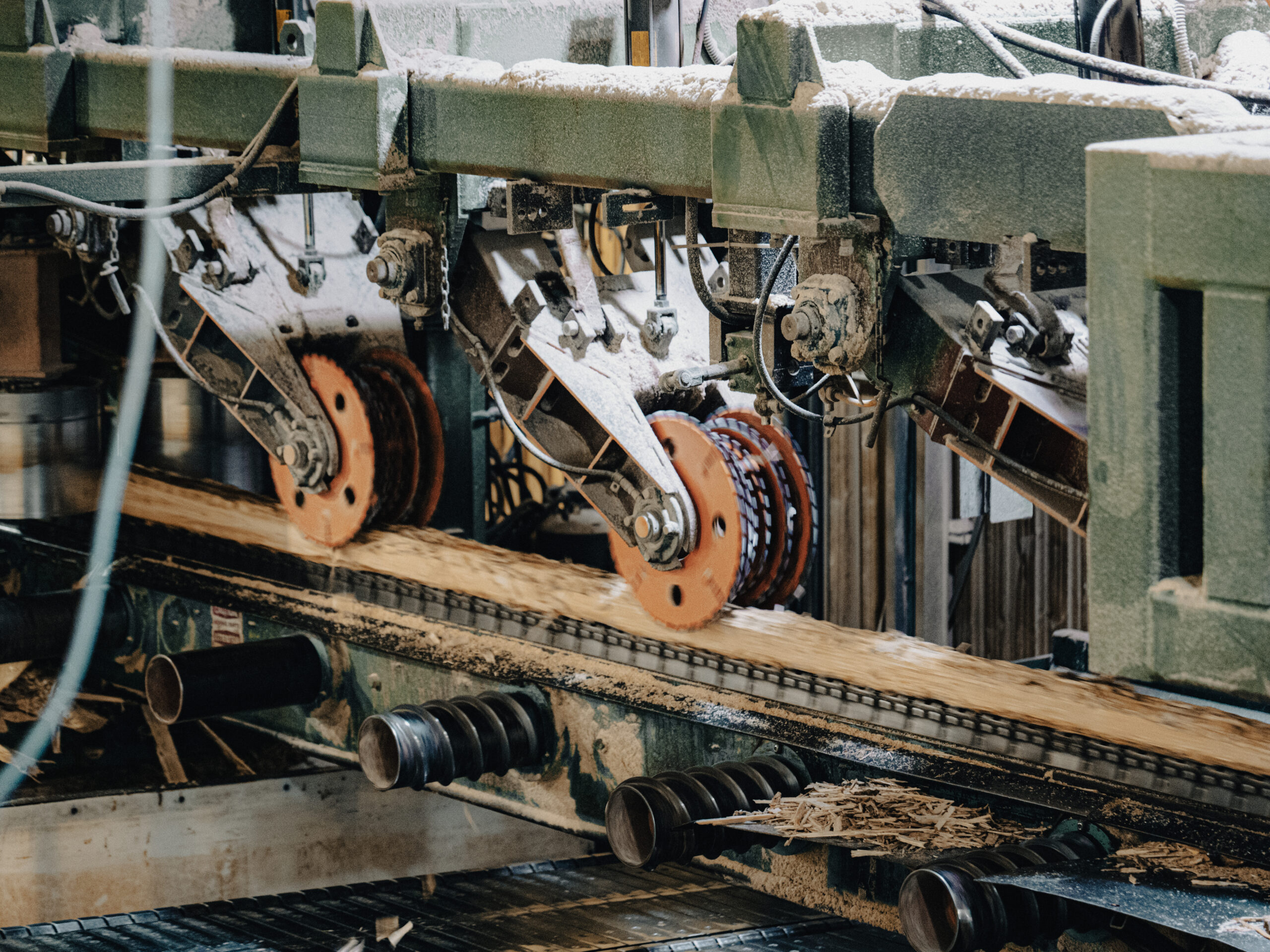
Debarking and primary breakdown
Logs enter the sawmill and have the bark removed. Each debarked log is scanned using lasers and cameras, a computer decides the proper positioning of the log to achieve the optimal sawing solution. The scanned log then travels to a canter where two flat sides are chipped on each log. If necessary, the canted log is then cut on each side by a twin-band saw, creating sideboards. These sideboards are removed and sent to the multi-saw edger.
The cant is then positioned flat side down, scanned and optimized by a computer again, and sent to the Canter Profiler Gang saw where it is squared and sawn lengthways into lumber of various widths and lengths. The CPG saws along the natural curve of the canted log, allowing longer boards to be cut. The resulting lumber is then sent to the trim saw.
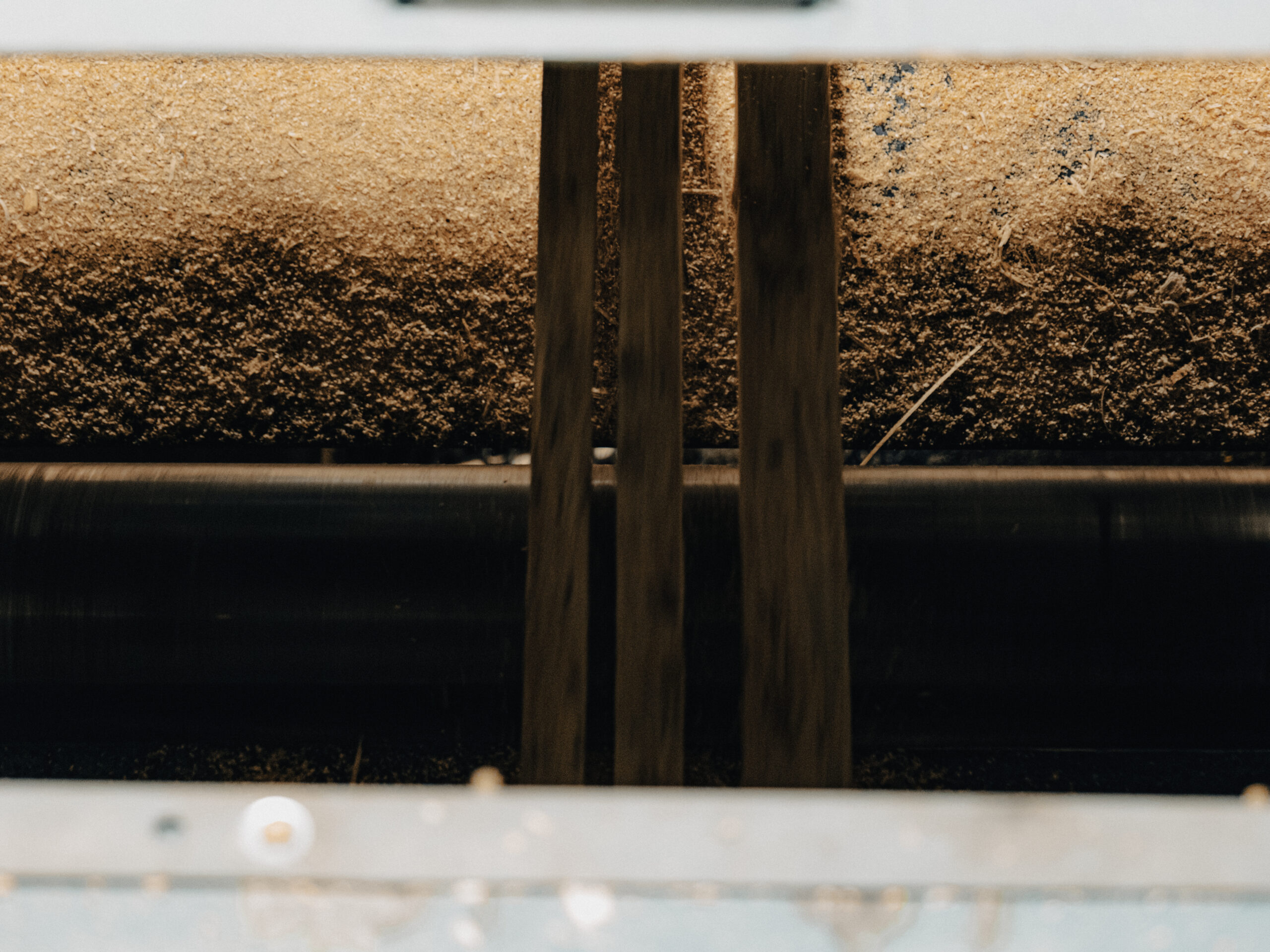
Trimming and edging
The lumber from the CPG is scanned and optimized by a computer, separated by species for drying consistency, and trimmed to lengths from 8 to 16 feet before heading to the bin sorter. Any lumber that does not meet quality standards is sent to the multi-saw edger.
The multi-saw edger receives lumber from both the twin band saws and the trim saw, scanning, optimizing, and then sawing square edges on each piece before sending them to the bin sorter.
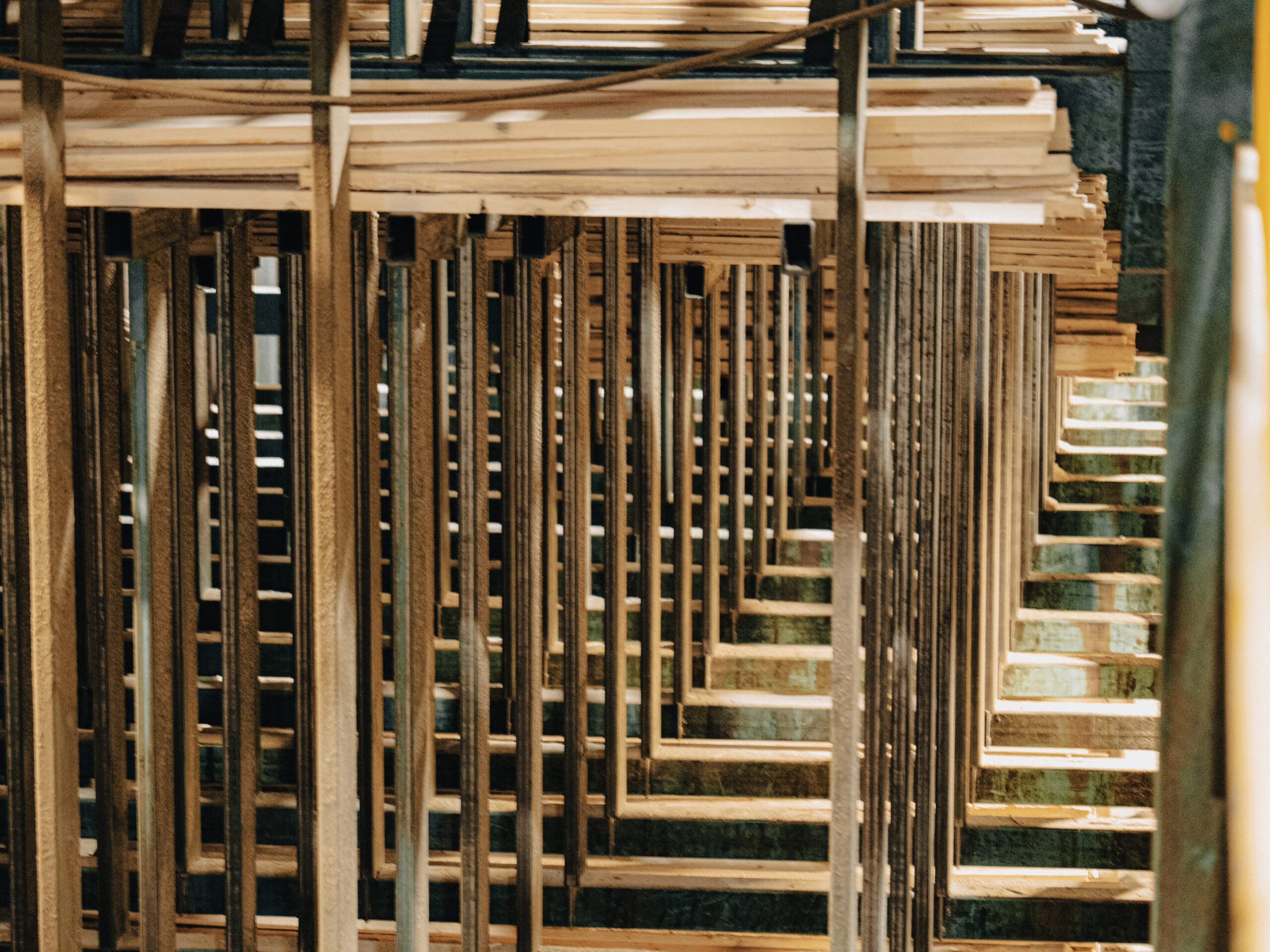
Sorting
The trimmed lumber is sent to the bin sorter, where it is automatically sorted by dimension, length, and species. The sorted lumber is dropped into separate storage bins until a predetermined number of boards are collected. These boards are then sent to the stacker.

Stacking, spacing and fastening
Sorted lumber is mechanically stacked in bundles with wood spacers between the layers to allow for improved airflow during the drying process. Stacked bundles are then strapped, and a barcode label is attached for inventory tracking. The rough green bundles are removed from the sawmill and stored in the yard until they are dried.
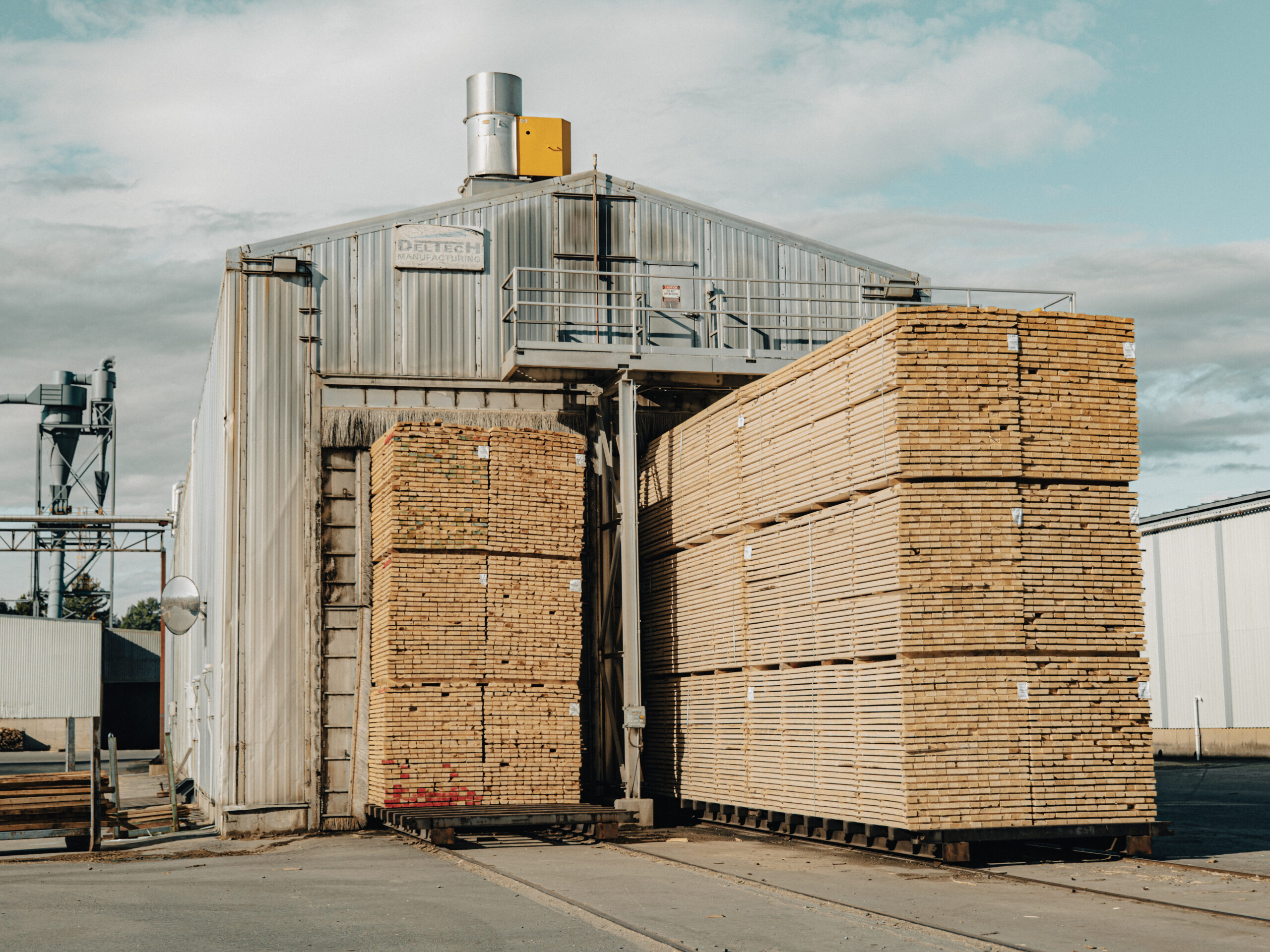
Drying
Rough green bundles of lumber then go through the kiln system where they are dried using steam as a heat source. Steam is generated by biomass boilers that burn mill by-products. The kiln system consists of both traditional batch kilns and a continuous kiln. Batch kilns dry a specific volume of lumber by putting it on carts, entering it into the kiln, heating the kiln to a predetermined temperature for a predetermined amount of time, and then cooling the kiln down and removing the lumber. The continuous kiln has a heating section that maintains a constant temperature, and the lumber is automatically moved through the heating section on carts. The rough dry lumber is then removed from the kilns and stored in the yard.
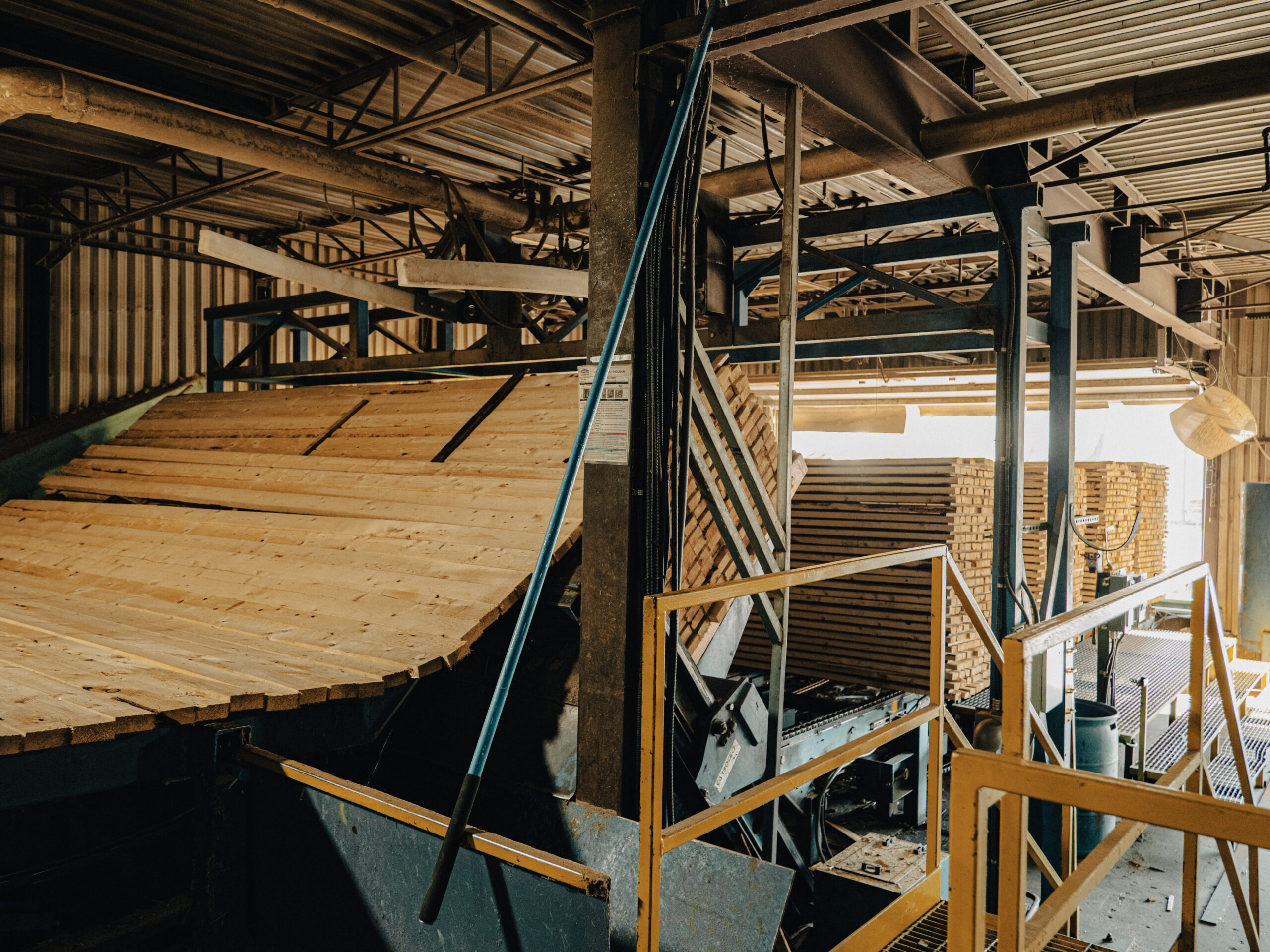
Planer Mill
Rough dry bundles of lumber enter the planer mill where they are unstacked at the tilt hoist and pass through a high-speed planer that puts four finished sides of exact dimensions on each piece.
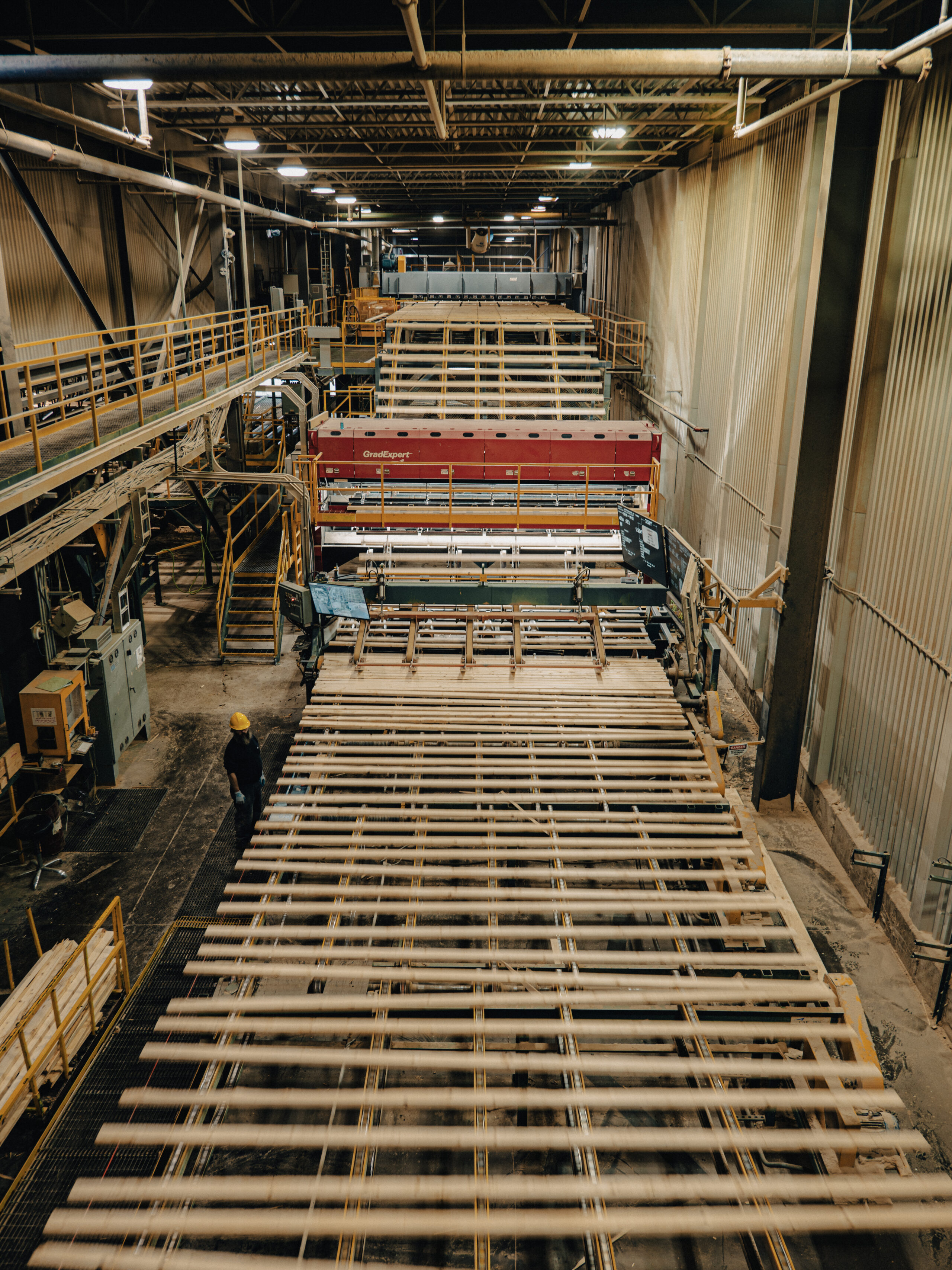
Grading
The automated grader incorporates artificial intelligence to determine the final grade of each piece of lumber. The grade determines the value and use of each board.
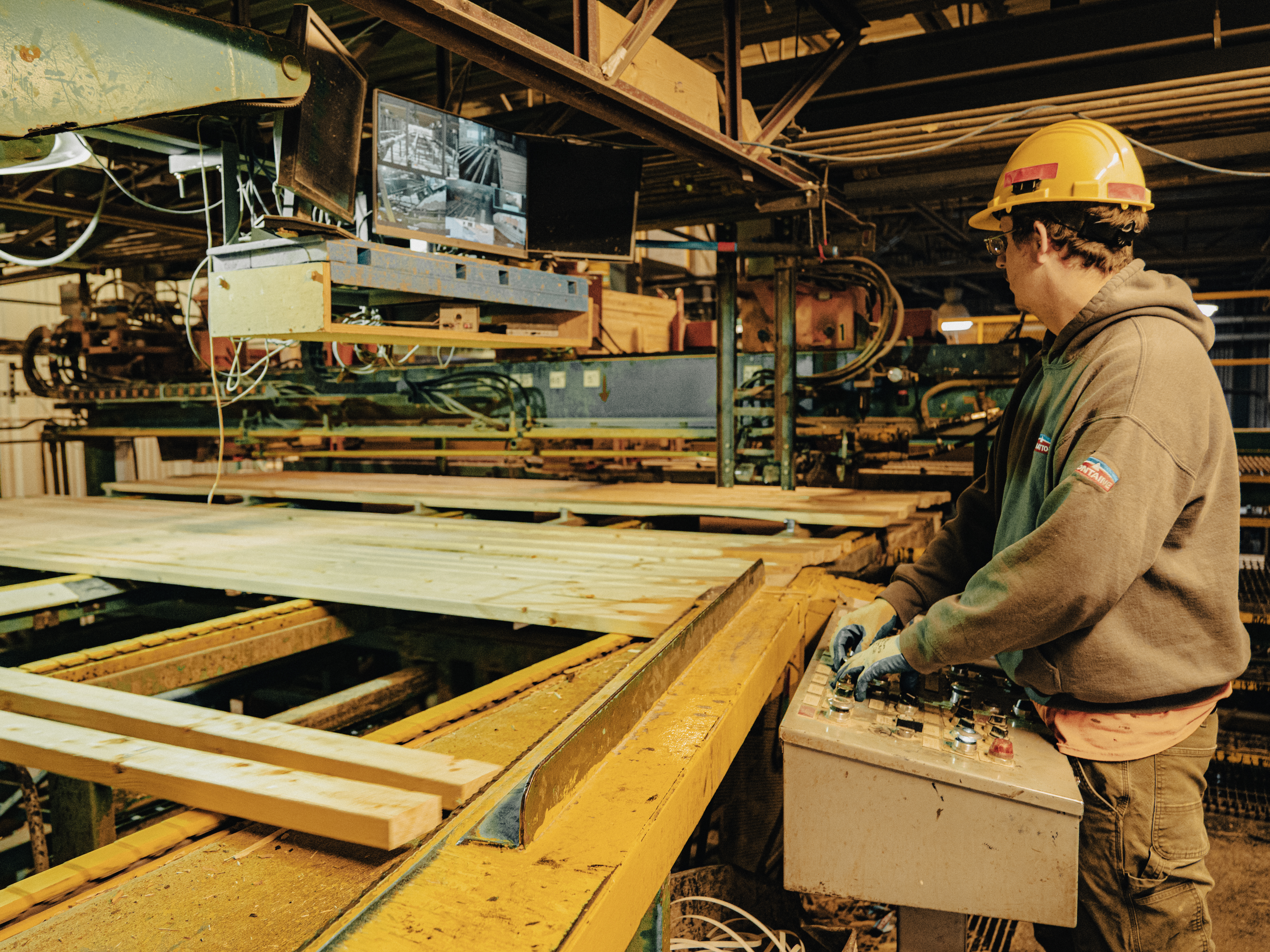
Trimming, sorting and stacking
The finished, graded lumber is trimmed to an exact length to meet specific customer needs, stamped with the final grade, automatically sorted, and then stacked and strapped.
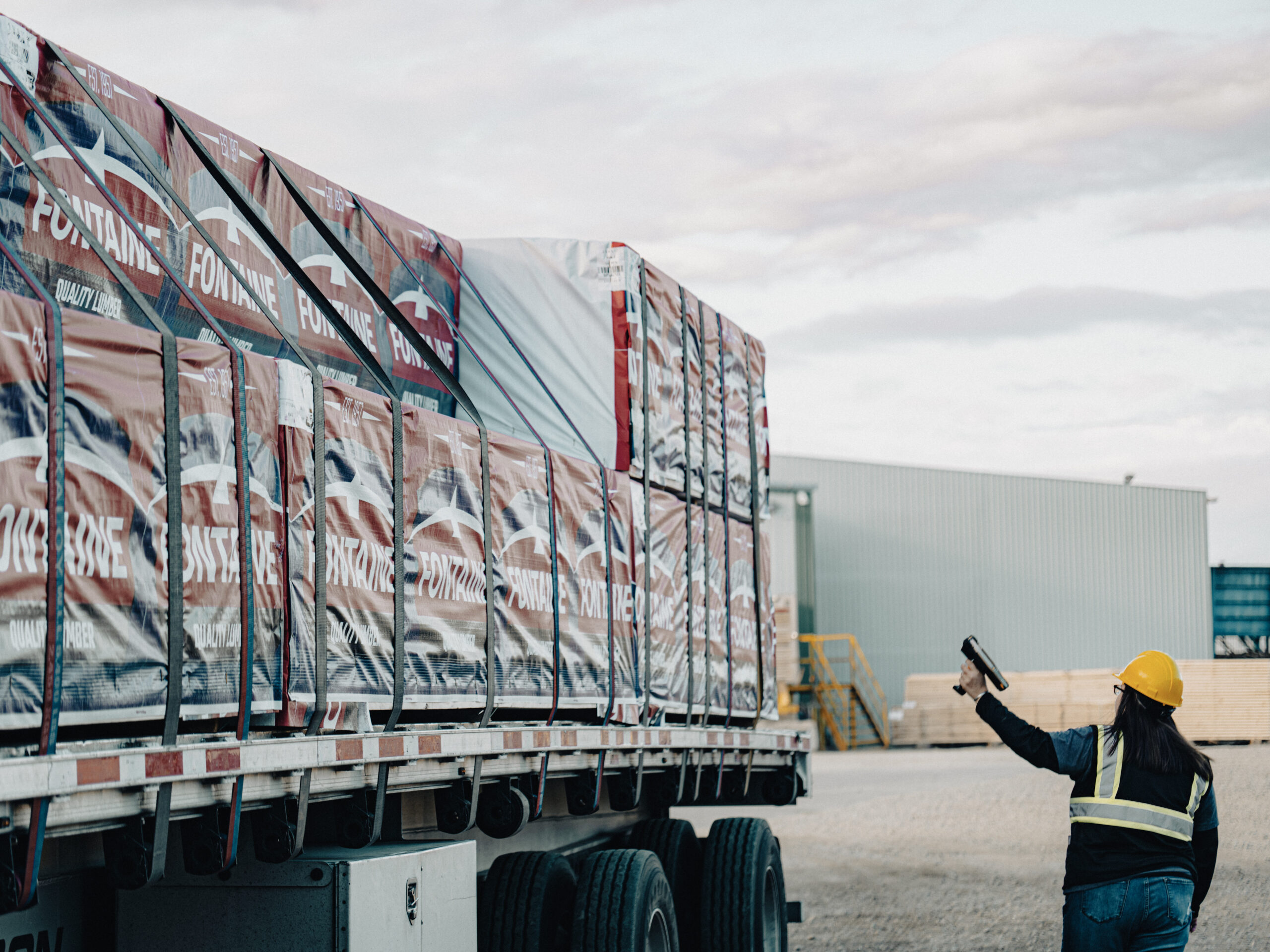
Wrapping and shipping
Finished bundles are wrapped with ultra-strong, woven fabric bearing Fontaine’s distinctive logo, and are ready to be shipped to our customers throughout the Northeast.
Environment
Committing to the FSC regulations is a voluntary process. It is proof forest companies engaged with the Forest Stewardship Council are dedicated to promote a sustainable forest management process as well as having their planning and procedures independently evaluated to make sure they continually respect the FSC® regulations.
Learn moreCareer opportunities
Career opportunities in a sawmill.
Our plants have been expanded and equipped with the newest machinery. The number of employees has also increased. Upgrading our installation has made working in our plants quite different from what it used to be. Task automation has made the work much less physical.
Sawmill Utility Worker – weekend with dble pay on sunday (Stratton)
- Stratton (USA)
- Full-Time

